Change is an inevitable part of any organization, and it's essential to keep everyone in the loop when it happens. Recently, our company has undergone some significant shifts in management that we believe will steer us toward a more innovative and successful future. We value transparency and want to ensure that all stakeholders are informed about these changes and what they mean for the team's goals and culture. So, stick around to learn more about the exciting directions we're heading and how these leadership updates will impact you!

Clear Introduction and Purpose
The recent restructuring within the organization has led to significant changes in management positions that will impact staff operations and leadership dynamics. This announcement serves to inform all employees about the updated management hierarchy, effective from November 1, 2023. The purpose of this communication is to ensure clarity regarding new responsibilities and expectations to foster a seamless transition. The adjustments aim to enhance our operational efficiency and align with our long-term strategic goals. Employees are encouraged to reach out to their direct supervisors for further clarification and support during this transition.
Details of Management Change
Recent shifts in corporate strategy have led to significant management changes within the organization. The appointment of John Smith as the new Chief Executive Officer (CEO) will take effect on January 15, 2024, replacing the former CEO, Jane Doe, who has served for five years. This transition occurs as the company adapts to market dynamics and aims to enhance its operational efficiency. The new CEO, who previously held the position of Chief Operations Officer (COO) at Tech Innovations Inc., brings over 20 years of experience in leadership roles. Additionally, Sarah Johnson will assume the role of Chief Financial Officer (CFO) effective January 1, 2024, succeeding Mike Brown. Sarah possesses a robust background in financial strategy from her tenure with Global Finance Corp. These changes are expected to foster innovative approaches and drive profitability in the upcoming fiscal year.
Effective Date and Transition Plan
Management changes within an organization can significantly impact operations and team dynamics. A thorough notification process ensures clarity and smooth transitions during such changes. The effective date, which may vary depending on the organization's internal policies, is the date when new management officially assumes their roles, often set within 30 days of the announcement. The transition plan outlines key steps, including the introduction of new leaders to the team, assignment of responsibilities, and scheduling of training sessions or meetings to facilitate adjustment. Open communication channels, such as dedicated Q&A sessions, can help address employee concerns during this period, fostering a supportive workplace environment. Additionally, timely updates on progress and adjustments to the transition plan are essential for maintaining trust and morale among staff.
Impact on Stakeholders and Contact Information
Recent changes in management at XYZ Corporation, a leading firm in the technology sector, will significantly impact various stakeholders, including employees (over 500 staff members), shareholders (approximately 1,000 investors), and clients (more than 10,000 active accounts). The new leadership team, headed by CEO Jane Doe, aims to enhance operational efficiency and foster innovation. Stakeholders can expect adjusted business strategies and modified communication protocols as the organization navigates this transitional phase. For inquiries, please direct questions to the newly appointed head of communications, John Smith, at john.smith@xyzcorporation.com or via the corporate phone line at (123) 456-7890. Regular updates and detailed reports will be provided to ensure transparency throughout this management reshuffle.
Reassurance of Business Continuity and Commitment
Notification of changes in management can serve as an important update for stakeholders. Changes in leadership, such as the appointment of a new CEO, can lead to shifts in business strategy and operations. Effective communication regarding these transitions helps reassure employees, clients, and partners about continuity in services and commitment to existing relationships. Key figures within the organization often emphasize the continuing mission, values, and dedication to excellence post-transition, ensuring that all stakeholders remain aligned. Historical context within the industry, economic performance statistics, and a clear outline of future objectives can foster confidence in the new management team's capability to lead effectively during periods of change.

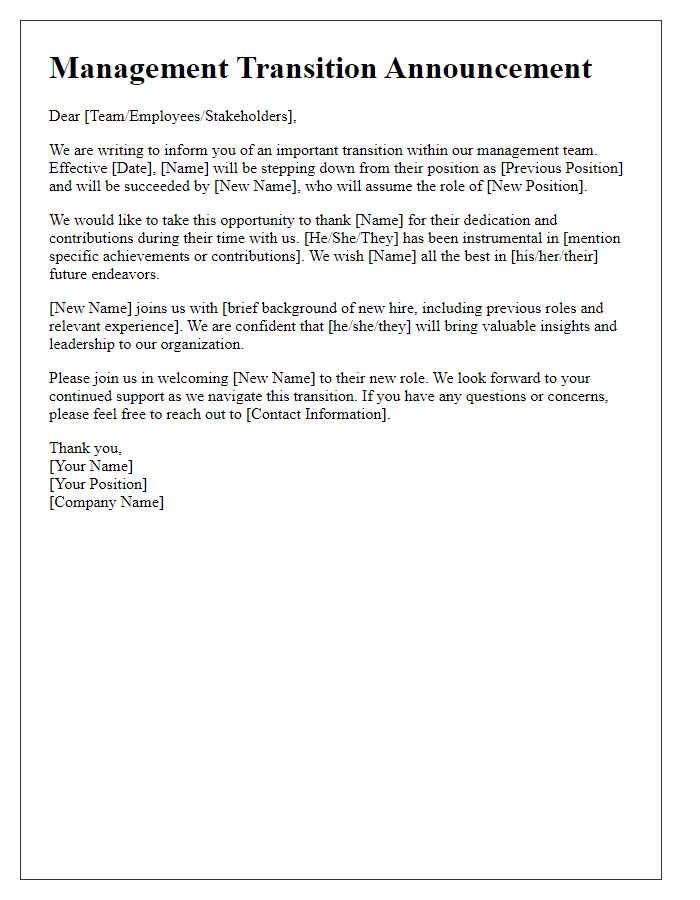
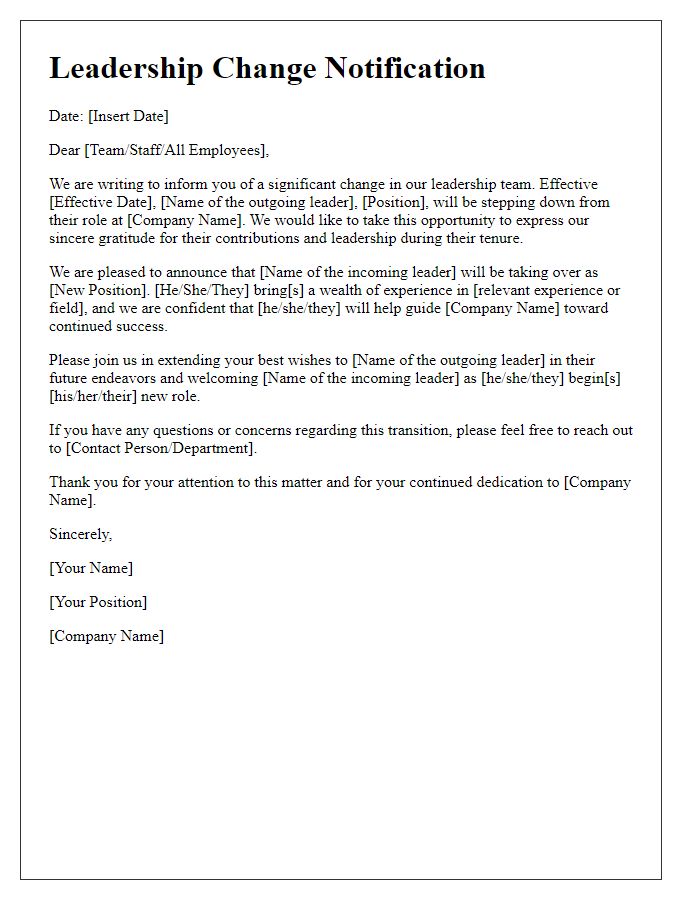
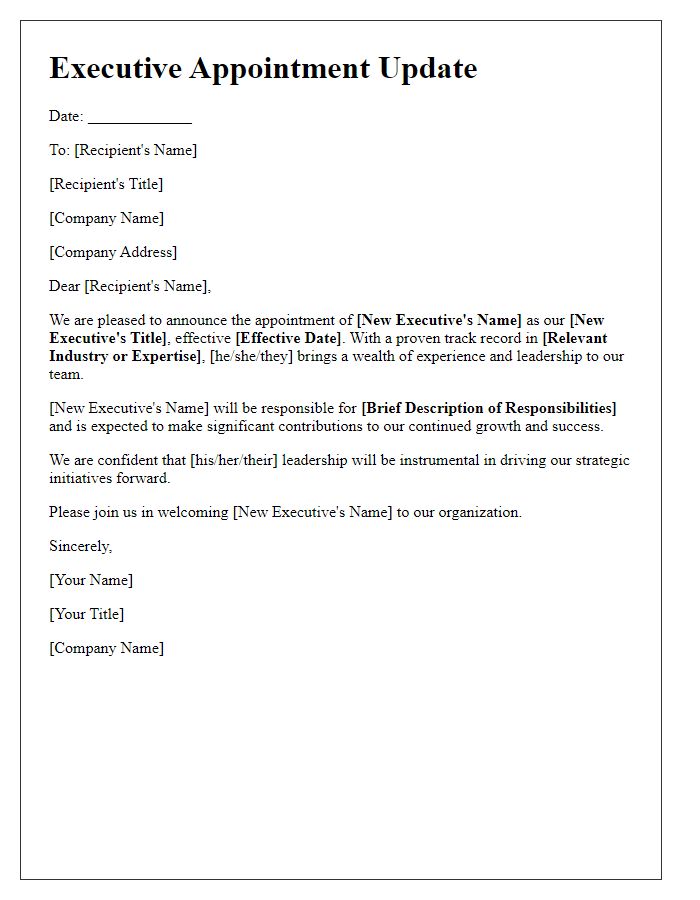
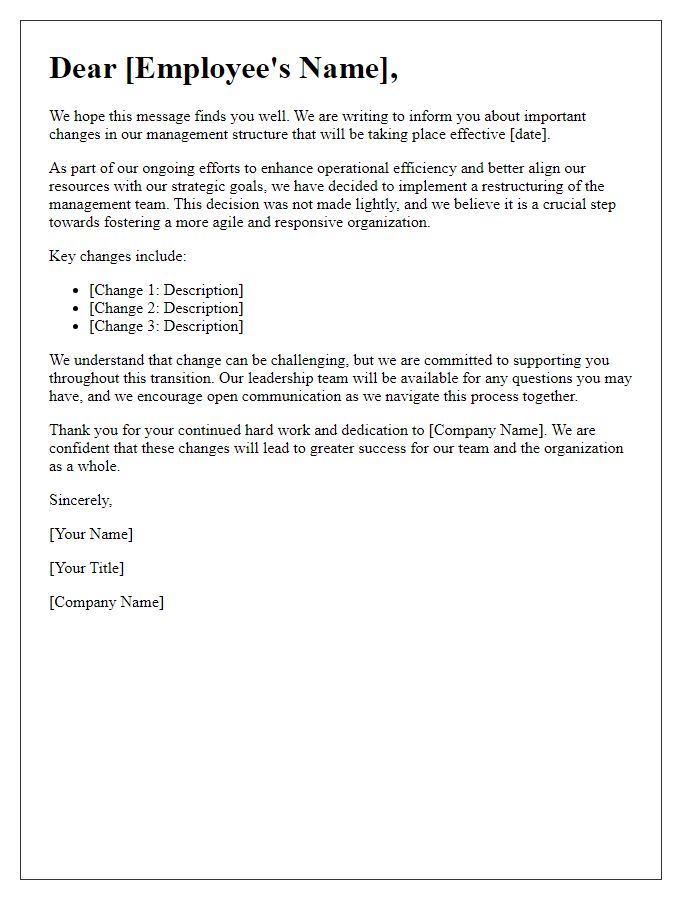
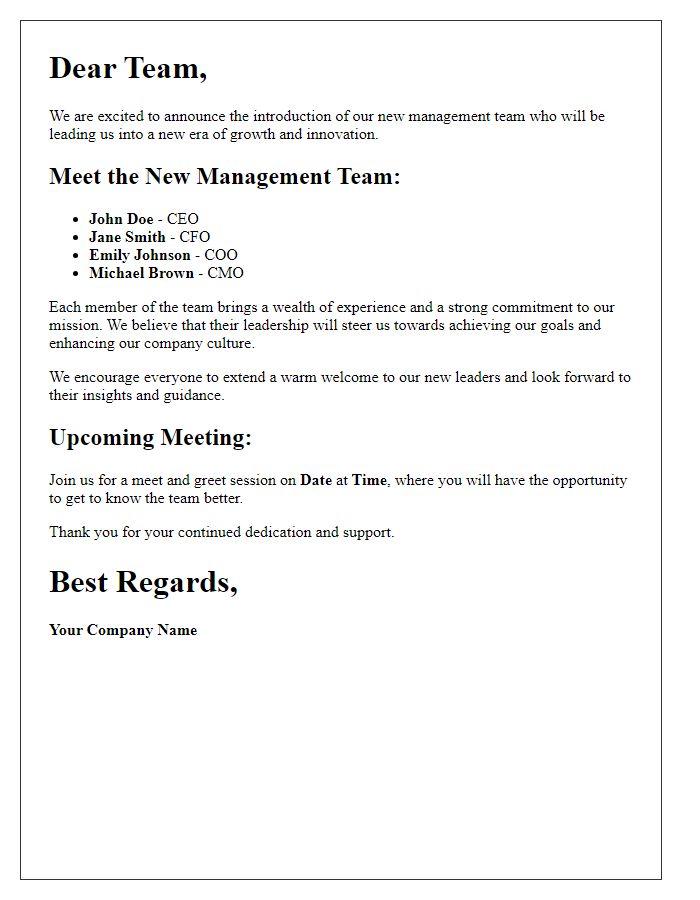
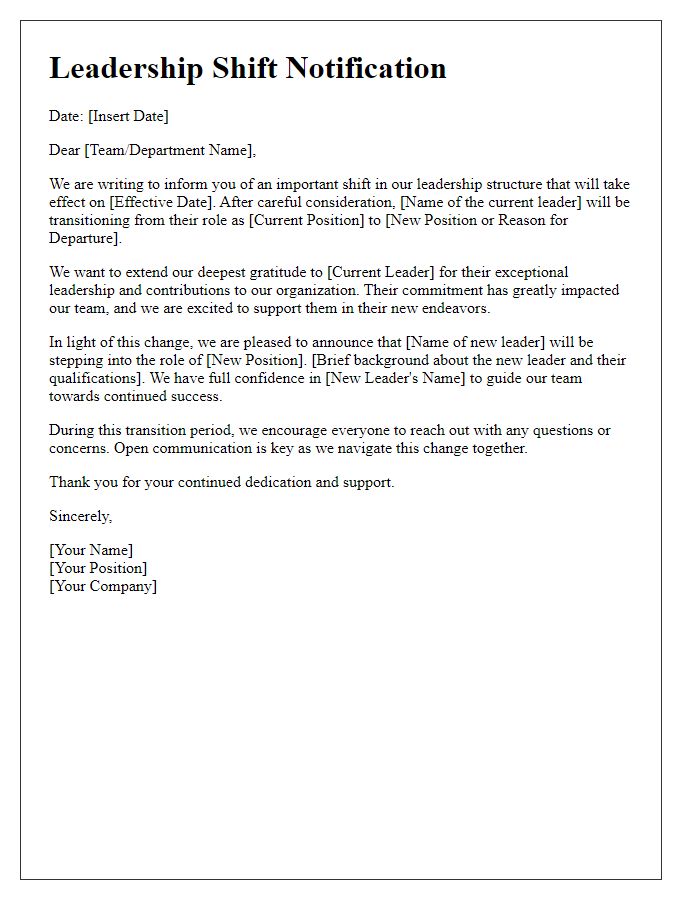
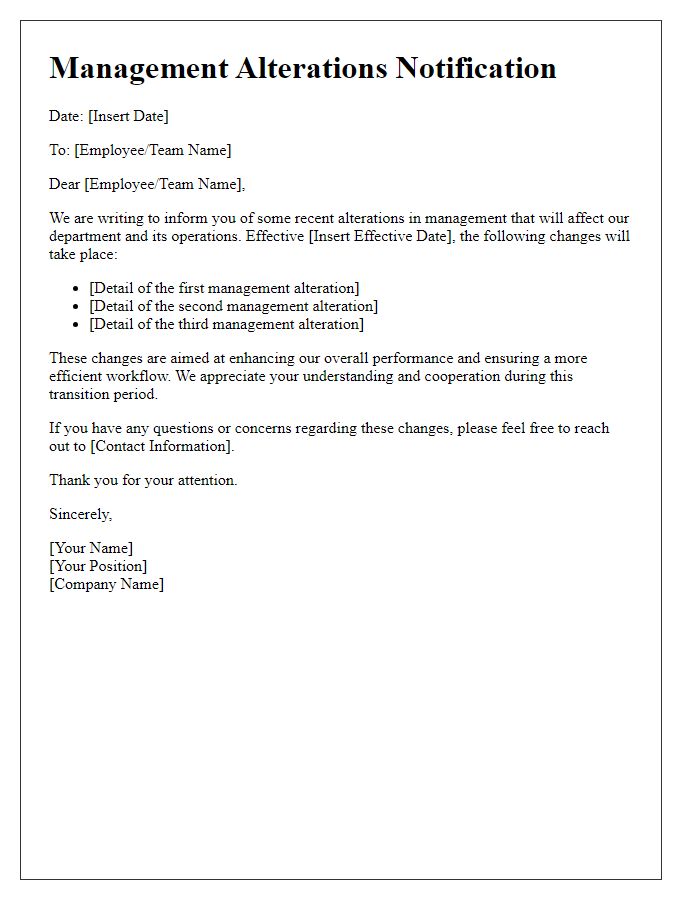
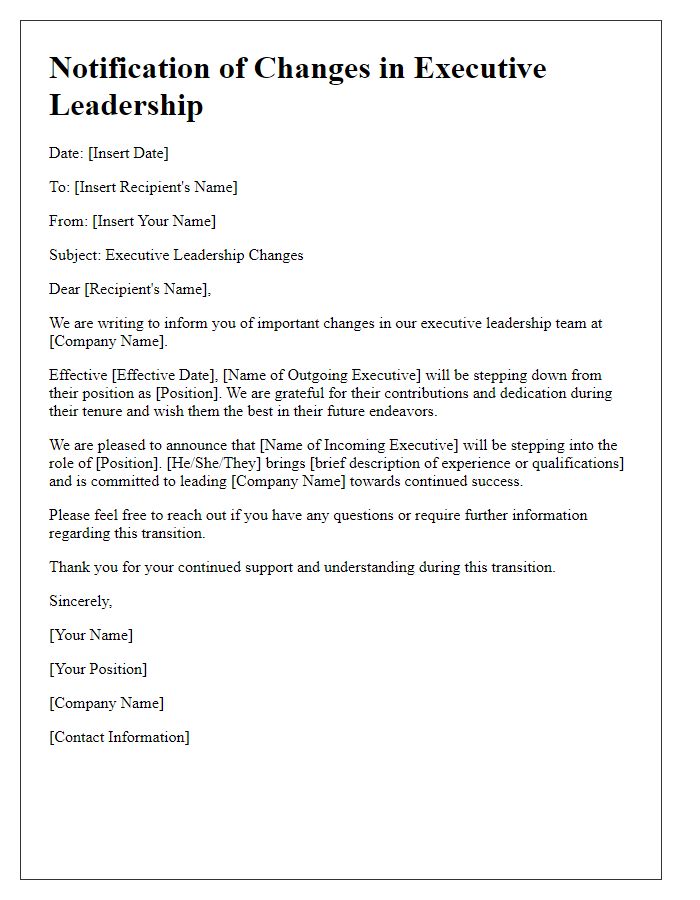
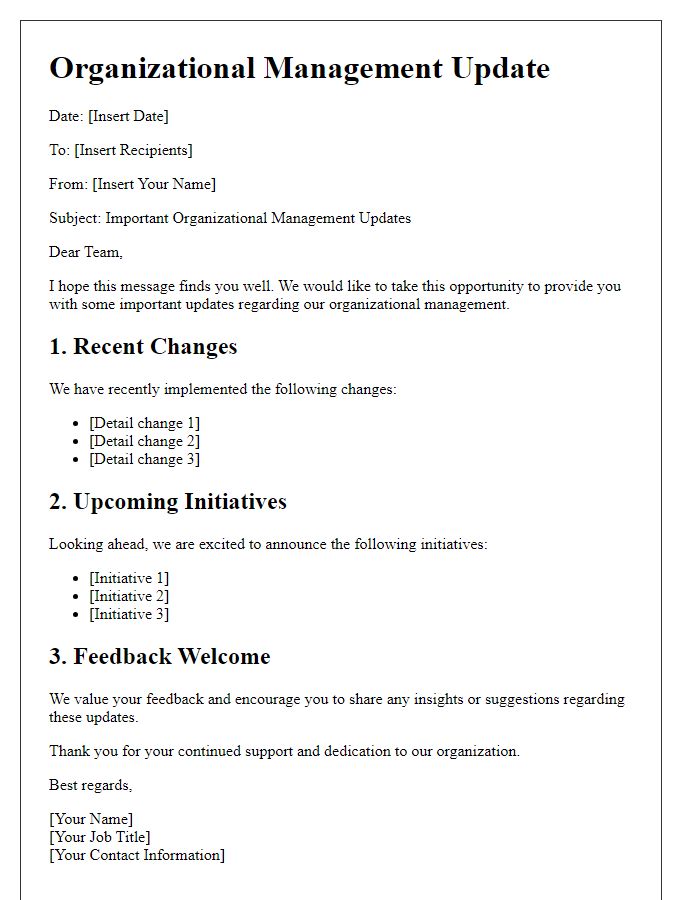
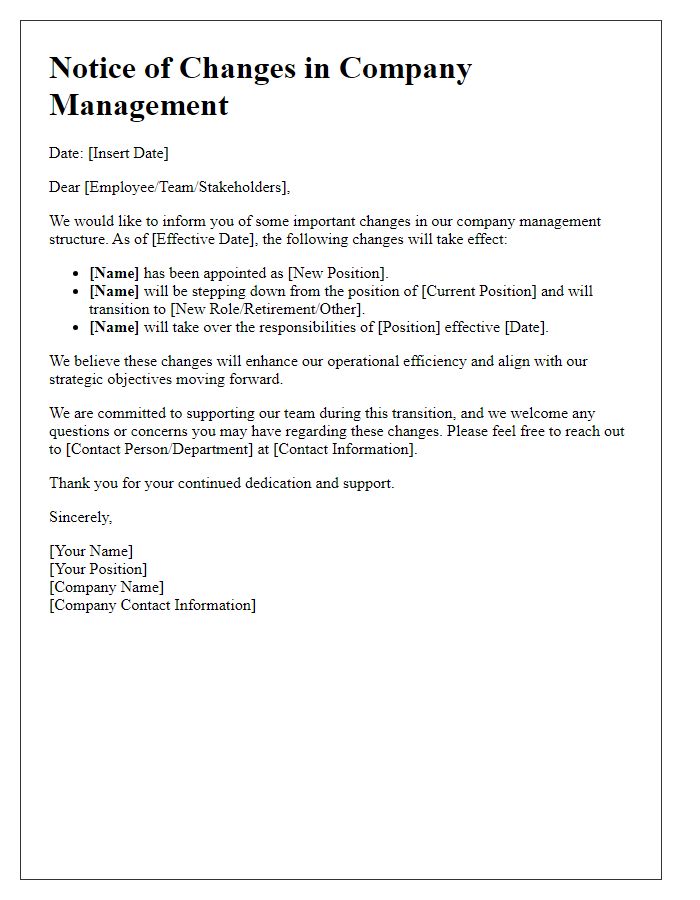


Comments